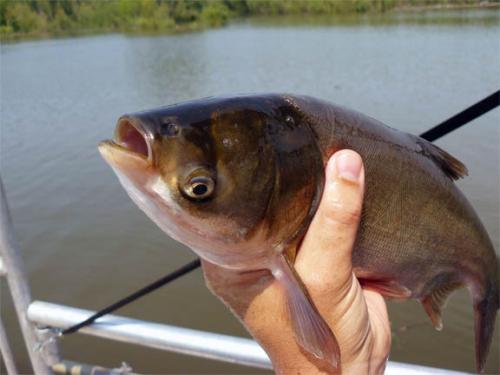Asian Carp – what have we learned? (Part 2)
Since 2011, several studies have furthered our understanding of risks posed by Asian carps and potential for their control. What have we learned in the past two years, and has it changed the balance of evidence related to key questions?
Can Asian carp reproduce in the Great Lakes basin?
A widely publicized 2007 study identified 22 American Great Lakes tributaries that could potentially provide carp with suitable habitat based on free-flowing river length. While that was enough to demonstrate the potential for carp to spawn successfully, the relatively low number of potential spawning streams suggested that carp might have a hard time finding each other in the right place at the right time.
A 2011 risk assessment published by Department of Fisheries and Oceans Canada added 41 Canadian tributaries to the list of potential carp spawning rivers based on length. The risk assessment 
Furthermore, a United States Geological Survey study published in 2013 built on past work, using a combination of river length, velocity, and temperature to examine habitat suitability. The study concludes that carp can spawn in shorter rivers than previously thought, and a greater number of Great Lakes tributaries, therefore, have potential for use by spawning Asian carp.
Computer simulations are one thing, but real-world observations often show that invasive species don’t behave as models predict. On the Wabash River in Indiana, the “flying” silver carp has adapted to a new environment in surprising ways.
In their native range, silver carp tend to wait for rising river levels before spawning, but a 2013 study found that silver carp in the Wabash River did not require a rise in water level to spawn. Instead, silver carp eggs were found drifting in the river from early June to early September regardless of water level or temperature. The upper Wabash River was also the smallest river ever verified as spawning Asian carp habitat. With its 1,768 square mile watershed, the upper Wabash is roughly the size of the Manistee River.
Aren’t Asian carp already in the Great Lakes?
No live bighead or silver carp have been found above the barrier since 2010 and environmental DNA (eDNA) testing has not found any evidence of these species in Lake Michigan tributaries. The only evidence of silver carp in Lake Michigan is a single sample from Calumet Harbor in 2009 that tested positive for silver carp eDNA.
Several bighead carp were captured in Lake Erie from 1995 through the early 2000s, but no live bighead carp have been captured in Lake Erie in recent years. Silver carp eDNA has been found in some samples from Lake Erie basin since 2011, but no live silver carp have been caught.
In short, while it is possible that we have a handful of adult bighead and silver carp in Great Lakes waters, there is no evidence of successful reproduction. In terms of invasion biology, these two Asian carp species may have been introduced, but they are not yet established.
This is good news for carp prevention efforts. Once a species establishes a population in a new ecosystem the size of the Great Lakes, it is virtually impossible to eliminate.



 Print
Print Email
Email




